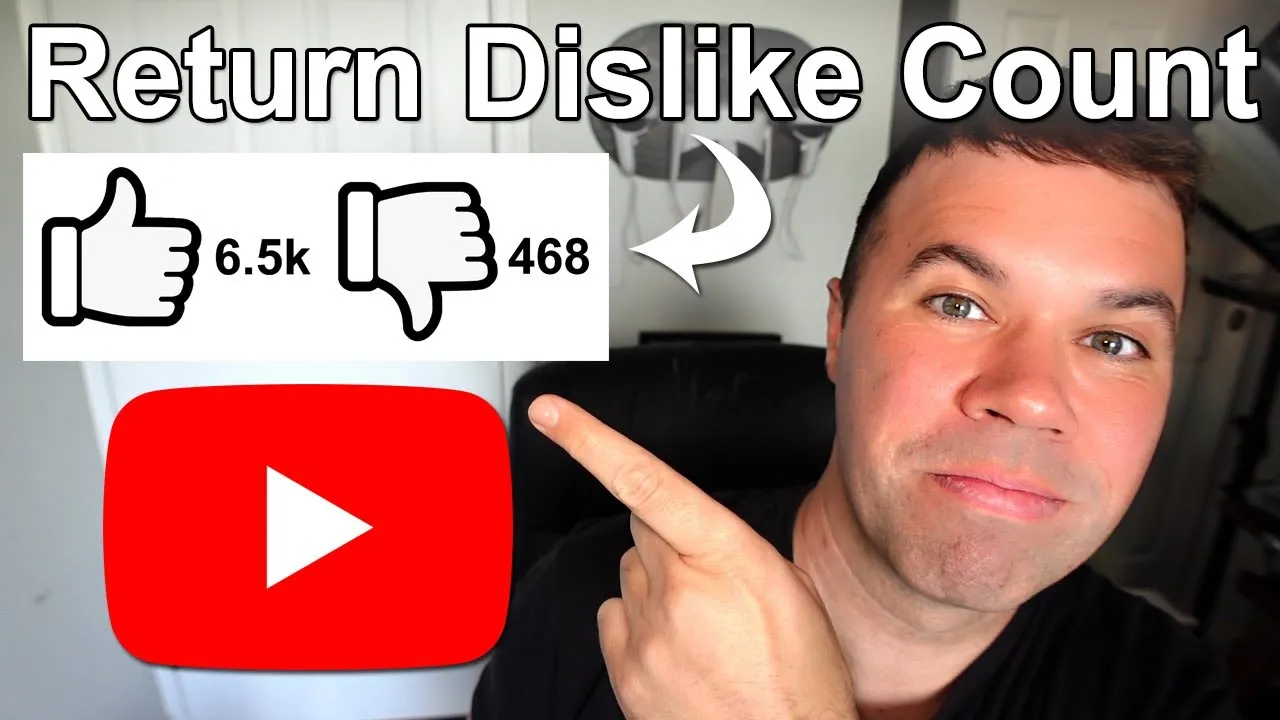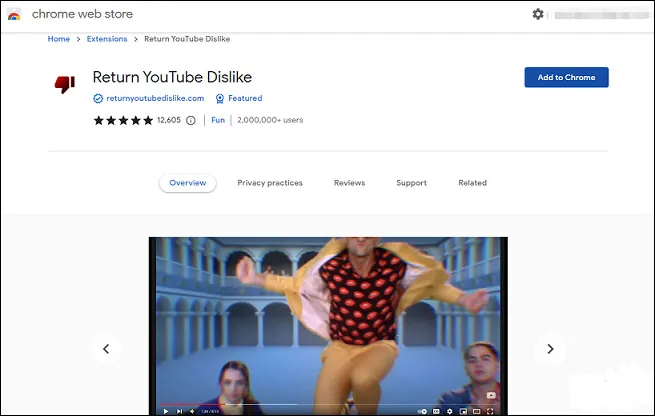YouTube has transformed the way we consume video content, and with that transformation comes a unique set of features, including the infamous 'dislike' button. While this feature may seem straightforward, it plays a crucial role in shaping user experience and content quality on the platform. Dislikes serve as a form of feedback, allowing viewers to express their dissatisfaction with specific videos. But what does this mean for creators and the algorithm? Let's dive deeper into the world of YouTube dislikes and their significance.
The Purpose of Dislikes on YouTube

Dislikes on YouTube are more than just a way for viewers to express their opinions; they serve several important functions that impact both creators and the platform itself. Here are some key purposes:
- Viewer Feedback: Dislikes provide immediate feedback to creators about their content. If a video garners a high number of dislikes, it signals that something may have gone wrong, whether it be the video’s content, quality, or relevance.
- Content Filtering: The dislike feature helps YouTube's algorithm better understand what types of videos audiences prefer. Videos with more dislikes may be deprioritized in search results or recommendations, allowing more appealing content to rise to the top.
- Community Engagement: Disliking a video can create a sense of community among viewers. It allows them to express collective dissatisfaction or agreement, fostering discussion in the comments section.
- Quality Control: For creators, a consistent pattern of dislikes can be a wake-up call to reassess their content strategy, leading to higher quality videos that better meet audience expectations.
In summary, dislikes are not just negative reactions; they are constructive tools that help shape the YouTube ecosystem, influencing both viewer satisfaction and creator accountability.
Also Read This: Boosting Sales on Picfair: Strategies for Success
How Dislikes Affect Content Creators

Dislikes on YouTube can significantly impact content creators in a variety of ways. While it's common to think that negative feedback only brings down morale, it can serve as a valuable source of insight for creators. Here’s how dislikes influence their journey:
- Feedback on Content: Dislikes provide creators with immediate feedback regarding their videos. If a specific video receives a higher volume of dislikes, it may indicate that the content didn't resonate well with the audience. This feedback can prompt creators to adapt their content strategy.
- Emotional Impact: Dislikes can be disheartening. Many creators pour their hearts into their work, and seeing a video they spent hours on receive negative reactions can sting. However, some use this as motivation to improve, fostering resilience.
- Community Engagement: Creators often engage with their audience to understand why a video received a dislike. This can lead to discussions in comments, fostering a more robust community and creating a dialogue that may not have happened otherwise.
- Content Strategy Adjustments: Over time, consistent patterns in dislikes can help creators refine their niche. For instance, if a creator typically covers tech but receives dislikes on a certain review, they might consider focusing more on tutorials where they see positive engagement.
Also Read This: Mastering Eye Sketch Creation on Dailymotion
The Role of Dislikes in Video Algorithm
Dislikes play a crucial role in YouTube's algorithm, influencing how videos are recommended and ranked. Understanding this can be vital for creators looking to boost their visibility:
| Aspect | Impact of Dislikes |
|---|---|
| User Engagement Metrics | Dislikes contribute to the overall engagement metrics, which YouTube algorithms analyze. A high dislike count can signal to the algorithm that the video may not be valuable to viewers. |
| Audience Retention | If viewers are disliking a video and leaving quickly, it may lower the video’s ranking. YouTube prefers content that keeps viewers engaged longer. |
| Content Visibility | Videos with an abnormal amount of dislikes compared to likes may be demoted in recommendations, affecting how many people see it. |
In summary, while dislikes can feel discouraging, they play a significant role in shaping the landscape of YouTube, both for individual creators and the platform’s overall functionality. Creators who embrace feedback and adapt accordingly may find themselves thriving in the long run.
Also Read This: Understanding the Cost and Benefits of Rumble Boxing Classes
5. Viewer Perception and Dislikes
Viewer perception plays a crucial role in the way content is consumed on YouTube. When users encounter a video with a high number of dislikes, it can significantly influence their decision to watch it. For many, dislikes act as a warning sign, suggesting that the content might not meet their expectations or that it could be of poor quality. This perception is often reinforced by the psychological principle of social proof—if others didn’t like a video, why should they?
Here's a quick breakdown of how dislikes can affect viewer perception:
- Quality Indicator: A high dislike ratio often leads viewers to assume the content lacks value.
- Content Bias: If a creator consistently receives dislikes, it may lead to a negative bias against their future videos.
- Engagement Levels: Videos with more dislikes may also receive fewer comments and interactions, further discouraging new viewers.
However, it’s important to remember that not all dislikes are created equal. Sometimes, a controversial topic can spark a mixture of reactions, leading to a higher dislike count while also boosting engagement through comments. This complexity adds an interesting layer to viewer perception that creators must navigate.
Also Read This: How to Conceal Your Appreciation on Behance
6. Alternatives to Dislikes: Feedback and Engagement
As YouTube evolves, so do the methods of viewer feedback. With growing concerns over the negativity associated with dislikes, the platform is exploring alternatives that foster constructive engagement. Instead of simply clicking a dislike button, viewers can provide more nuanced feedback that contributes to the conversation.
Here are some alternatives to dislikes:
- Comments Section: Viewers can articulate their opinions in the comments, offering specific reasons for their feelings instead of a simple thumbs down.
- Polls and Surveys: Creators can use community posts or video polls to gather feedback and gauge audience sentiment more effectively.
- Like/Dislike Ratio: Focusing on likes gives a positive spin and encourages communities to engage in a more supportive manner.
Moreover, YouTube is experimenting with features that allow creators to better understand their audience's preferences. By prioritizing engagement rather than negativity, both creators and viewers can cultivate a more positive and constructive environment. This shift not only enhances the user experience but also encourages a more engaged and loyal viewer base.
Understanding the Impact of Dislikes on YouTube
YouTube has evolved into a powerful platform for content creators and viewers alike, facilitating the sharing of information, entertainment, and creativity. However, the introduction of the dislike button has sparked debates regarding its impact on content performance and creator experience. Dislikes serve as a feedback mechanism that can influence other users’ perceptions and the overall reach of videos.
When viewers dislike a video, it can lead to several outcomes, including:
- Content Visibility: Videos with high dislike ratios may be deprioritized in YouTube's algorithm, affecting their visibility and potential audience reach.
- Content Creator Morale: A significant number of dislikes can be disheartening for creators, potentially impacting their motivation and future content quality.
- User Engagement: Dislikes can foster discussions among viewers, helping them understand the content better and encouraging them to express their opinions.
The impact of dislikes can also be analyzed through metrics such as:
| Metric | Impact of Dislikes |
|---|---|
| Video Rank | Higher dislikes can lower ranking in search results. |
| Viewer Retention | Dislikes may indicate dissatisfaction, leading to shorter watch times. |
| Community Feedback | Can prompt content creators to adjust their approach based on viewer sentiment. |
In conclusion, while dislikes can serve as valuable feedback for creators and viewers, their implications on content visibility and creator morale cannot be overlooked. Understanding these dynamics is essential for navigating the evolving landscape of YouTube.